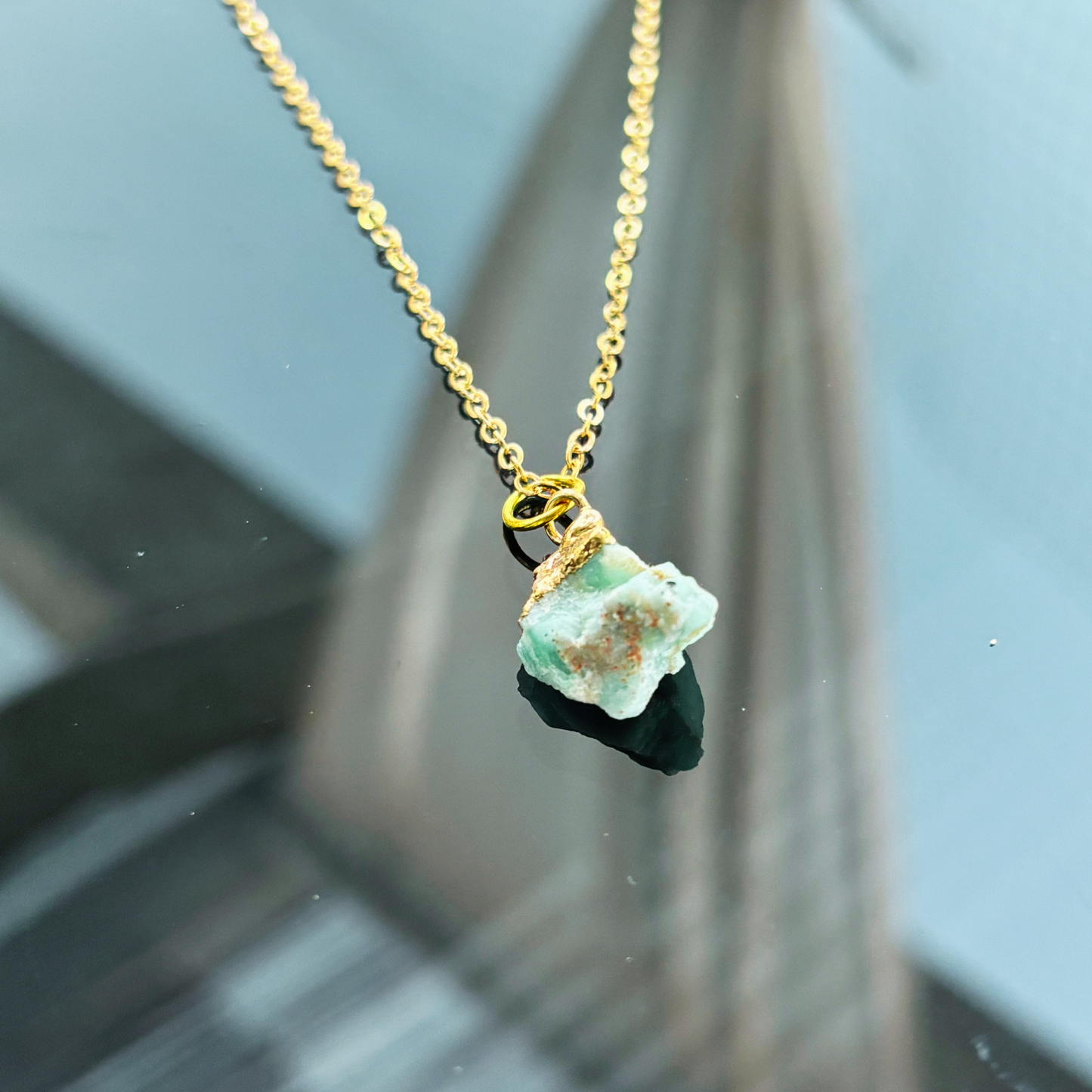Aquelia Design
Колие с необработен Лабрадорит
Колие с необработен Лабрадорит
Редовна цена
€53,00 EUR
Редовна цена
€67,00 EUR
Продажна цена
€53,00 EUR
Единична цена
/
по
С включени данъци.
Доставката се изчислява при плащане.
Наличността за получаване на място не можа да се зареди
Физически свойства
- Химическа формула : (Ca,Na)(Al,Si)₄O₈ (минерал фелдшпат, част от серията плагиоклази)
- Цвят : Обикновено сив до сиво-черен, но показва забележителна игра на цвят (лабрадоресценция) в синьо, зелено, жълто и червено
- Кристална система : Триклиника
- Твърдост : 6 - 6,5 по скалата на Моос
- Специфично тегло : 2,68 - 2,72
- Прозрачност : полупрозрачен до непрозрачен
- Блясък : стъкловиден до перлен
- Ивица : Бяла
Оптични свойства
- Индекс на пречупване : 1.559 - 1.573
- Двойно пречупване : 0,008 - 0,010
- Плеохроизъм : Слаб, показва различни цветове в зависимост от ъгъла на гледане
- Лабрадоресценция : Силни, преливащи цветни проблясъци (сини, зелени, жълти и понякога червени)
Лечебни и метафизични свойства
- Енергия : Лабрадоритът е камък на трансформацията и магията, смята се, че подобрява интуицията и психическите способности.
- Чакри : Основно свързани с чакрата на гърлото и чакрата на третото око
- Емоционално изцеление : Успокоява свръхактивния ум и енергизира въображението. Намалява тревожността и стреса.
- Физическо лечение : Използва се в практики за лечение с кристали за подпомагане на дихателната система, подпомагане на храносмилането и подобряване на метаболизма. Помага при зрителни и мозъчни нарушения.
Употреби
- Бижута : Популярни в пръстени, огърлици, обеци и гривни поради уникалния си лабрадоресценция. Често изрязани като кабошони или мъниста.
- Декоративен : Широко използван в дърворезби, декоративни предмети и инкрустации.
- Индустриален : Понякога се използва като инертен материал в строителството и като оразмерителен камък.
грижа
- Почистване : Трябва да се почиства с топла сапунена вода и мека четка. Избягвайте агресивни химикали, ултразвукови почистващи препарати и продължително излагане на силна слънчева светлина, което може да избледнее цвета.
- Устойчивост : Лабрадоритът е сравнително мек и може лесно да се надраска. Трябва да се съхранява отделно от по-твърдите скъпоценни камъни, за да се предотврати повреда.
Източници
- Основни източници : Лабрадоритът се намира предимно в Канада (Лабрадор и Нюфаундленд), със значителни находища също във Финландия, Мадагаскар, Русия и Съединените щати.
Съвети за идентификация
- Цвят и лабрадоресценция : отличителната игра на цвета на лабрадорита (лабрадоресценция) може да помогне при идентифицирането му. Въпреки това, той може да бъде объркан с други минерали от фелдшпат като лунен камък или спектролит.
- Тестване : Гемологичното тестване може да помогне за разграничаването на лабрадорита от подобни на вид минерали чрез неговата специфична гравитация, индекс на пречупване и уникална лабрадоресценция.
Хипнотизиращата игра на цвят, метафизичните свойства и многофункционалността на лабрадорита го правят предпочитан скъпоценен камък сред колекционери и ентусиасти на бижута. Неговата широко разпространена наличност и обхват от приложения подчертават значението му както в декоративните, така и в метафизичните полета
Дължина: 44см+5см
Кристал: 1.5см-3см
Сподели


